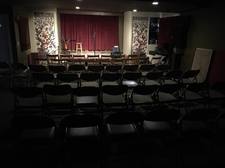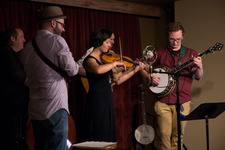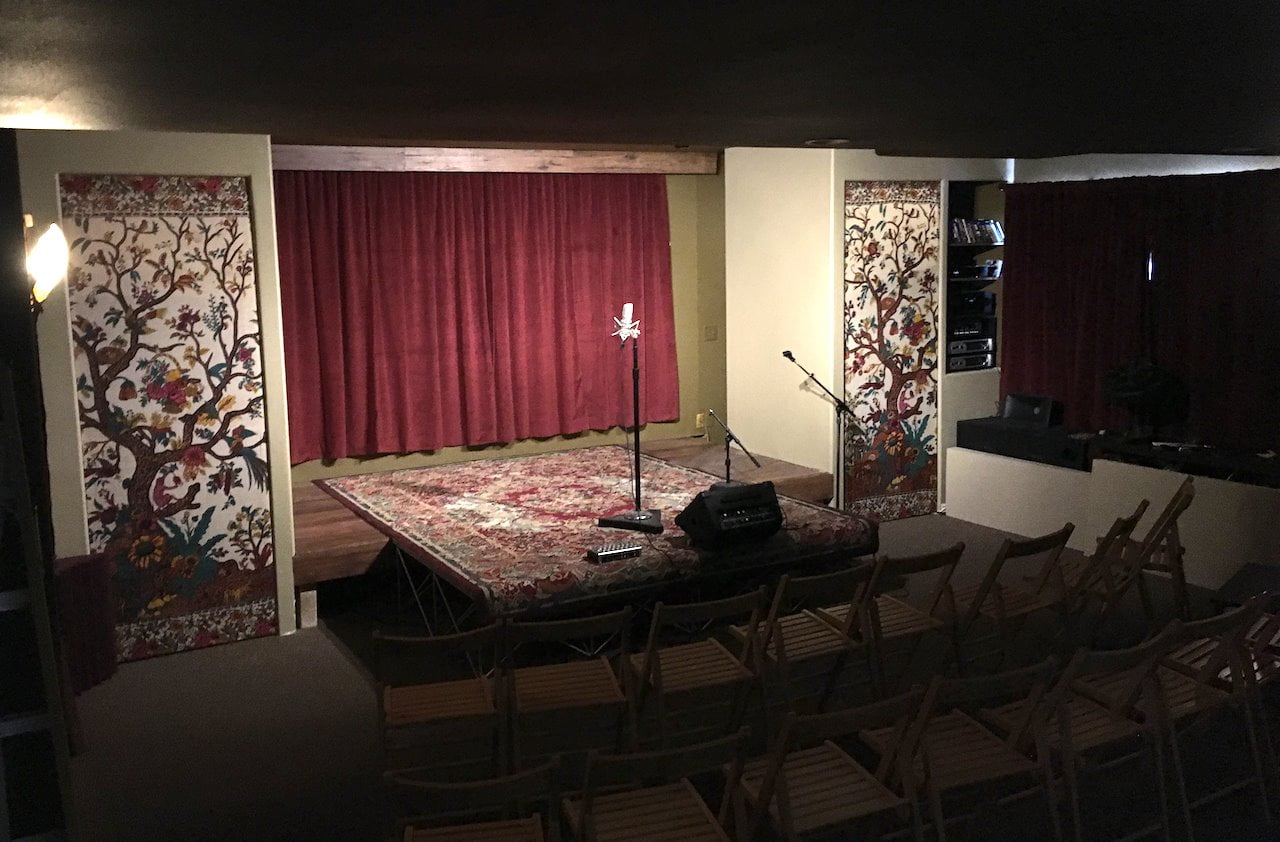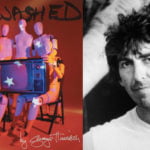It’s the time of year for saving money!
Yesterday, I had the opportunity to record a house concert. It was the second time I recorded in this particular venue. The first time was a semi-disaster. Sure, the recording turned out, but it was not up to a level I was happy with. So, session #2 shaped up to be a challenge.
 Most, no, actually all house concerts are held in someone’s home, hence the name. Recording in a home is rather different than recording in a concert hall. In a concert hall you usually have plenty of space to work with, but in most house concerts space is at a premium – rooms are smaller, ceilings lower, and there is a roomful of pesky humans to muck things up further. Also, unlike a concert hall, where there is almost always one spot where the sound is correctly balanced for your microphones, (although it may be hard to find) some house concerts just don’t have that one spot.
Most, no, actually all house concerts are held in someone’s home, hence the name. Recording in a home is rather different than recording in a concert hall. In a concert hall you usually have plenty of space to work with, but in most house concerts space is at a premium – rooms are smaller, ceilings lower, and there is a roomful of pesky humans to muck things up further. Also, unlike a concert hall, where there is almost always one spot where the sound is correctly balanced for your microphones, (although it may be hard to find) some house concerts just don’t have that one spot.
Since I had recorded at this venue once before I knew what the challenges would be. Unlike most house concerts, which are held in a home’s living room. These concerts are held in a basement, but what a basement it is! When the owner first acquired his home it had a large unfinished basement with a 9 ft. ceiling. He has turned it into a concert space, complete with a stage, Altec Lansing PA system, and sound treatments that holds approximately fifty people. It is an intimate space that draws out the best in a performer. It even has a “green room” for musicians to warm up in.
 The previous concert I recorded at this concert space was back in December, featuring the Pelta-Tiller Trio. I had gone in blind, having never recorded there before. I decided to use my Schoeps Collette microphone M/S set-up with the Grace Lunatec mic preamplifier feeding my Korg MR-1000 for the recording. In hindsight that was a mistake. The problem was that no matter where I placed my microphones, the side capsule was picking up too much sound from the PA and the on-stage monitors. If I turned down the side capsule the stereo evaporated into wide mono. Since this was the only mic set-up I brought, because I had decided to travel light, the final results were less than satisfactory.
The previous concert I recorded at this concert space was back in December, featuring the Pelta-Tiller Trio. I had gone in blind, having never recorded there before. I decided to use my Schoeps Collette microphone M/S set-up with the Grace Lunatec mic preamplifier feeding my Korg MR-1000 for the recording. In hindsight that was a mistake. The problem was that no matter where I placed my microphones, the side capsule was picking up too much sound from the PA and the on-stage monitors. If I turned down the side capsule the stereo evaporated into wide mono. Since this was the only mic set-up I brought, because I had decided to travel light, the final results were less than satisfactory.
For yesterday’s concert I changed tactics. Instead of an M/S rig I went with a pair of Alesis/Groove Tube AM-40 microphones with their hyper-cardioid pattern capsules installed. A hyper-cardioid pattern microphone has a similar coverage area to a standard cardioid except it is narrower with a steeper level cut-off at the edges of its coverage. Like a standard cardioid its overall coverage area shaped like an ice-cream cone, but a narrower one. With the Hyper cardioid microphones I could place them so the PA speakers were outside the mic’s coverage pattern. Also, for this concert there were no monitor speakers, which eliminated the other prime contributor to a less than satisfactory recording. With a stage full of acoustic musicians, none of which is more than five feet away from each other, you really do not need an onstage monitor. Thank God…
Just to be on the safe side, for this recording I also took a feed from the PA board, which in this case was from a single Ear Trumpet Labs Louise microphone run through the artist’s Grace Felix preamp pedal and the house La Chapell tube preamp. Using a Mackie 1202 VZ board (which if you don’t use it’s EQ or turn any of its gain controls past unity sounds quite good) I mixed the direct sound from the PA with my mics. This combination worked nicely. Instead of mucking up the direct and natural acoustic sound on stage, the PA now worked as sort of a room reverb, way in the background.
 I realize that up to this point I haven’t mentioned who I was recording at the concert. This show was headlined by Natalie Rae Padilla, who has just released her first CD, Paths and Places. She was accompanied by Eric Thorin on bass, Jon Sousa on DADGD-tuned guitar, Nick Amodeo on mandolin, and Sam Armstrong-Zickefoose on banjo. She is also in the band Masontown, who placed second in the Rockygrass band competition. Her own music leans more toward old-timey than bluegrass, but regardless of genre Padilla’s solos have a level of inventive finesse the marks her as special. I heartily recommend her album, which was produced by Berklee Music professor and mandolinist extraordinaire, Joe K. Walsh.
I realize that up to this point I haven’t mentioned who I was recording at the concert. This show was headlined by Natalie Rae Padilla, who has just released her first CD, Paths and Places. She was accompanied by Eric Thorin on bass, Jon Sousa on DADGD-tuned guitar, Nick Amodeo on mandolin, and Sam Armstrong-Zickefoose on banjo. She is also in the band Masontown, who placed second in the Rockygrass band competition. Her own music leans more toward old-timey than bluegrass, but regardless of genre Padilla’s solos have a level of inventive finesse the marks her as special. I heartily recommend her album, which was produced by Berklee Music professor and mandolinist extraordinaire, Joe K. Walsh.
In the vintage guitar world there is an old and well-established theory – “Every old guitar has something to teach you.” In the world of live on-location recording the corollary is “Every concert venue has something for you to learn.” Often, the first lesson is a harsh one…








